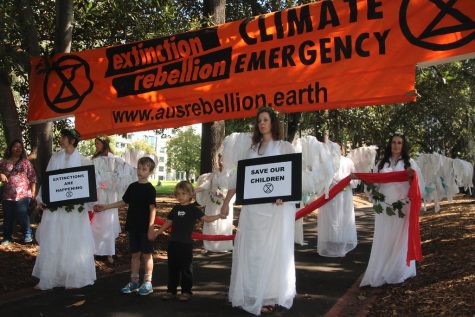Australian bushfires hurts Australians, animals, environment, and onlookers alike

Australia faces rampant bushfires across its six states as one of the worst environmental disasters in its recent history.
February 6, 2020
Australia is currently facing one of its worst environmental disasters in recent history.
Starting in December, the Australian bush fires, most prominent in New South Wales, have ravaged through every Australian state, appearing in isolated buildings or across miles of terrain. Across the six states, more than 7.3 million hectares of land have been burned. In comparison, the Amazon Rainforest fires burned 7 million hectares of land back in 2019.
The environmental impacts extend beyond burned terrain. Entire habitats and forests have been destroyed, threatening the millions of unique species that inhabit the nation. Half a billion animals have been impacted by fires in New South Wales alone, and an estimated billion have been impacted nationwide. Birds, reptiles, and mammals alike were included in these numbers. Most noticeably, one-third of the Australian koala population has been killed in the forest fires.
In terms of human impact, entire towns and neighborhoods have been engulfed in flames, and many houses have been burned to a crisp. Over 2,000 homes in New South Wales have been damaged alongside many more homes across the nation. Civilians have been forced to leave their homes in the face of heavy smoke and fire. A total of 28 people in Australia have died so far.
AP Environmental Science Teacher Raymond Marchinkowski described these impacts as “awful and super sad for the people and the environment. I just hope that Australia can recover from this.” One of his students, Junior Kayleigh Orrico, agreed with his sentiments, saying “This is just a tragedy overall. A nation is burning. I can’t even imagine how everyone is hurting.”
While it isn’t a rare occurrence for bushfires to occur in Australia as the hot, dry summers create the perfect weather for the nation’s annual “fire season,” the conditions in Australia have been unusually extreme during this time, which fans the flames and makes extinguishing the fires much more difficult. Australia experienced the highest international temperature back in December; temperatures across the nation ranged from 113 to 120 degrees Fahrenheit. Meanwhile, strong winds and the experience of one of the worst droughts in decades have exacerbated the flames and caused them to spread quickly.
Many experts claim that climate change has played a part in the destructive Australian bushfires by intensifying weather conditions like winds and droughts. Space and Earth Systems Teacher James Parker explained the science behind these claims, “Warmer temperatures, contributed by our release of greenhouse gases, often mean drier conditions, especially in Australia. These drier conditions make it easier for fires to spread and reach their ignition temperatures more quickly.”

Climate change protestors assemble in request for government action against the bushfires.
Climate change is a natural process, with temperatures and weather conditions fluctuating every year. However, recent human influences, like the abundant release of greenhouse gases through the combustion of fossil fuels, have sped up climate change and caused increasingly warmer and drier conditions.
Australians are taking action to help mitigate the effects of the bushfires. State and federal authorities and volunteer firefighters have been working to combat the fire crisis for months. The United States, Canada, and New Zealand have even pooled in donations and volunteer firefighters to help the nation out in their efforts to fight the fires.
“I hope these efforts will help Australia prevent as much damage as possible,” Senior Pedro Oliveira said upon hearing of combat methods. “Because Australia is still only halfway through its fire season. We can only pray and donate as students to help others in the midst of this disaster.”
If you want to help with victim and animal relief and recovery, donate to the Australian Red Cross, New South Wales Rural Fire Service, or the Salvation Army.



















